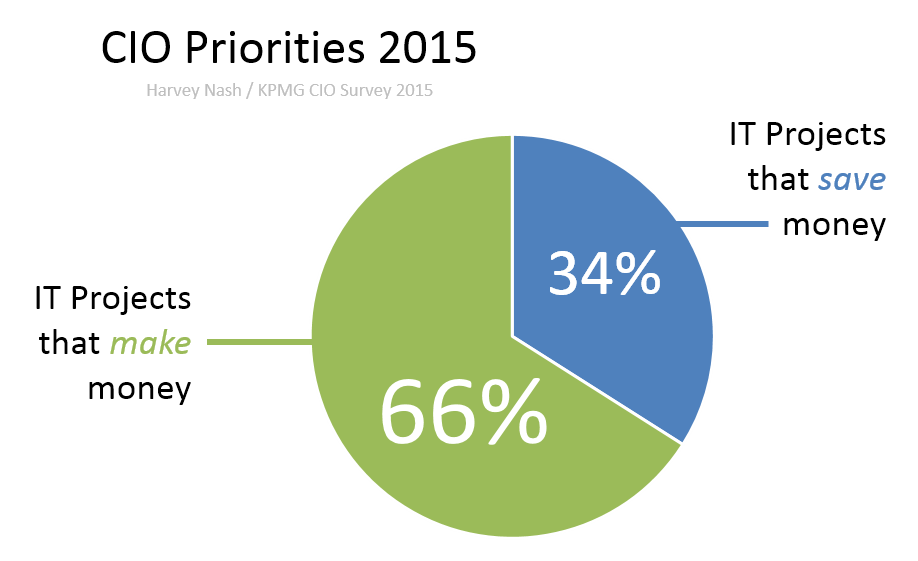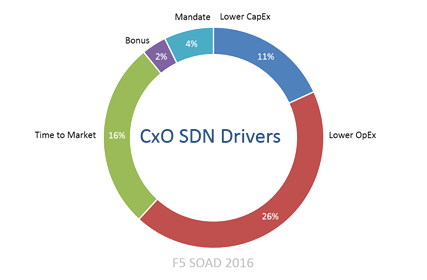Wie der CIO das Beste aus beiden Welten herausholen kann

Der CIO hat es ziemlich schwer. Er muss sich an den Geschäftszielen orientieren, die zunehmend auf Wachstum und Wachstumsgeschwindigkeit ausgerichtet sind, während sie versucht, ihr Budget nicht zu überschreiten.
Sie muss die Betriebskosten unter Kontrolle halten, obwohl sie ein wachsendes Portfolio an Web-, Cloud- und mobilen Applications betrieblich unterstützen muss. In der Zwischenzeit muss er herausfinden, wie er schneller werden kann. Er ist einer von neun von zehn Führungskräften, die unter Druck stehen, neue Apps schneller auf den Markt zu bringen .
Ich beneide den CIO kein Jota. Der ständige Balanceakt zwischen Innovationen, die Gewinne einbringen, und notwendigen Renovierungen, um Geld zu sparen, bereitet vielen Führungskräften sicherlich Kopfzerbrechen.
Doch es gibt für den CIO eine Möglichkeit, „das Beste aus beidem zu haben“ – so heißt es im Sprichwort.
In diese Richtung? Operationalisieren Sie alles.
Die Einführung eines DevOps-Ansatzes für neue Applications verbessert nachweislich die Lieferzeit sowie die Lieferhäufigkeit. Die Bereitstellungshäufigkeit ist ein gängiger Messwert, der in Umfragen und Untersuchungen zum „Stand von DevOps“ verwendet wird. Und alle zeigen so ziemlich das Gleiche. Eine stärkere Übernahme von DevOps-Praktiken in Entwicklung und Betrieb erhöht die Fähigkeit von Unternehmen, häufiger Bereitstellungen durchzuführen.
Durch die Ausweitung des radialen DevOps-Bereichs auf anwendungsaffine Dienste im Netzwerk (die am stärksten von Applications betroffen sind) kann der CIO die Markteinführungszeit weiter verkürzen, was unserer Forschung zufolge ein Haupttreiber für die Operationalisierung von Trends wie SDN ist.

An zweiter Stelle steht – Trommelwirbel bitte – die Senkung der Betriebskosten. Dies ist die Kostenersparnis laut einer CIO-Umfrage von Harvey Nash/KPMG , die 34 % der CIOs als vorrangig erachten.
Die Prämisse dabei ist: Wenn Sie durch die Operationalisierung von Bereitstellungen – einschließlich der Netzwerkkomponenten, die am stärksten mit Applications verbunden sind und von ihnen beeinflusst werden – Geld sparen können, können Sie die Dinge durch die Automatisierung nicht nur beschleunigen, sondern auch die Gesamtkosten senken. Das bedeutet, dass mehr Geld in gewinnbringende IT-Projekte fließen kann.
Der Schlüssel liegt darin, jetzt jene vampirartigen Apps und Projekte zu identifizieren, die das IT-Budget mit hohen Betriebskosten belasten, und sie produktiv zu gestalten. Das spart Geld. Da Automatisierung ein wesentlicher Bestandteil der Produktivgestaltung ist (ob mit SDN oder DevOps), können Sie Mitarbeiter und Ressourcen freisetzen, um sie auf IT-Projekte zu konzentrieren, die Geld einbringen. Das wird zweifellos die Markteinführungszeit verkürzen und Ihre Umsätze steigern.
Die Operationalisierung des Netzwerks mit SDN und die Anwendung von DevOps bei der Bereitstellung und Implementierung können einen großen Beitrag zum Erfolg von IT-Projekten leisten – sowohl zu solchen, die Geld sparen , als auch zu solchen, die Geld einbringen . Das bedeutet, dass der CIO tatsächlich das Beste aus beiden Welten haben kann.
